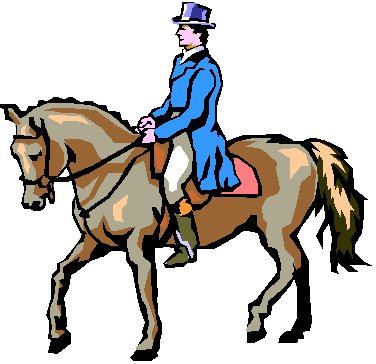To flashes of lightning and rolling of thunder, accompanied by sudden heavy rains, I ventured into Jay Gatsby country in New York’s Long Island, to visit a horse farm.
[Photo: wallpaperstock.com]

Through a chain of he knows, she knows and we know someone who is an aficionado of dressage who owns with three partners, I wangled an invitation to a horse farm.
Met at the train station by a late 50-year-old man who looked as though he stepped out of “Vanity Fair” by his dress, he first drove me in his Sports MB to his sprawling multilevel house with a manicured lawn, tennis court, swimming pool and stables, among other furnishings on a multimillion dollar piece of real estate.
My host, a multimillionaire, prefers anonymity. I shall call him “Cal.”
Cal inherited money in real estate. He expanded his empire in land and buildings globally, and then branched out into information technology and aerospace and defense.
Given his wealth, his love of horses, it was not long before he took up dressage. He participates in local and regional dressage shows, he confesses.
Reticent about the expenses that comes with this leisurely and upper-class hobby, Cal prefers to talk of the pleasures this aristocratic sport gives him. At this point, he suggested, a trip to his horse farm was in order.
We took sometime to get there, owing to heavy rains: fallen branches on narrow, back roads made driving difficult. Finally, we drove through a large white gate on to his 20-25 acre farm. In all, Cal and his business horse-owning associates’ property houses some 100m horses.
Additionally, the farm, as a business, provides stabling and western and English riding and training in dressage. The riding school has both an indoor and outdoor training rink.
The soggy weather did not permit me to see Cal’s horse perform his dressage routine. The stables are well-lit, well-stocked and well-climatically controlled. The horses are well looked after.
Ten full-time workers and some 20-30 part-timers supplement the permanent staff as needs be. A farrier is in residence who does occasional blacksmithing. Seasoned trainers are on the payroll. A veterinarian is on call. Regularly, purveyors supply the farm with feed, equipment and any services needed.
Eight years ago, Cal and his partners bought the farm when it came on the block not only for the price [unquoted] at auction but for the paddocks and especially the large training ring to dress their horses for competition.
He does admit he is not running a money-making proposition. Rare is the year the farm turns a profit. A school is beginning to show promise of turning a small profit. Plans are a foot to open a shop; it will sell everything from reins to saddles, and the money the shop would bring in should soften the red ink on accounts.
The way Cal talks he and his partners willingly spend a pretty penny yearly for the farm and their horses upkeep, not to speak of the fees, the travel to shows, and the like. Easily, expenses run up to 4-8 million and counting yearly.
Although he does not say it, Cal is a happy horse man. Fully attired in his dressage uniform, atop his 13-year-old gelding, he looks the very image of what a classic dressage rider fancies himself. For the moment, money is no object as he luxuriates in a sense of nobility this sport bestows on him.
[Photo: pickgif.com]

As Cal drives me back to the train station to catch my train to New York, the words of F Scott Fitzgerald’s “Rich Boy” take on a deeper meaning for me: “Let me tell you about the very rich. They are different from you and me.”
[Photo: fitzgerealdmusing.blogspot.com]



